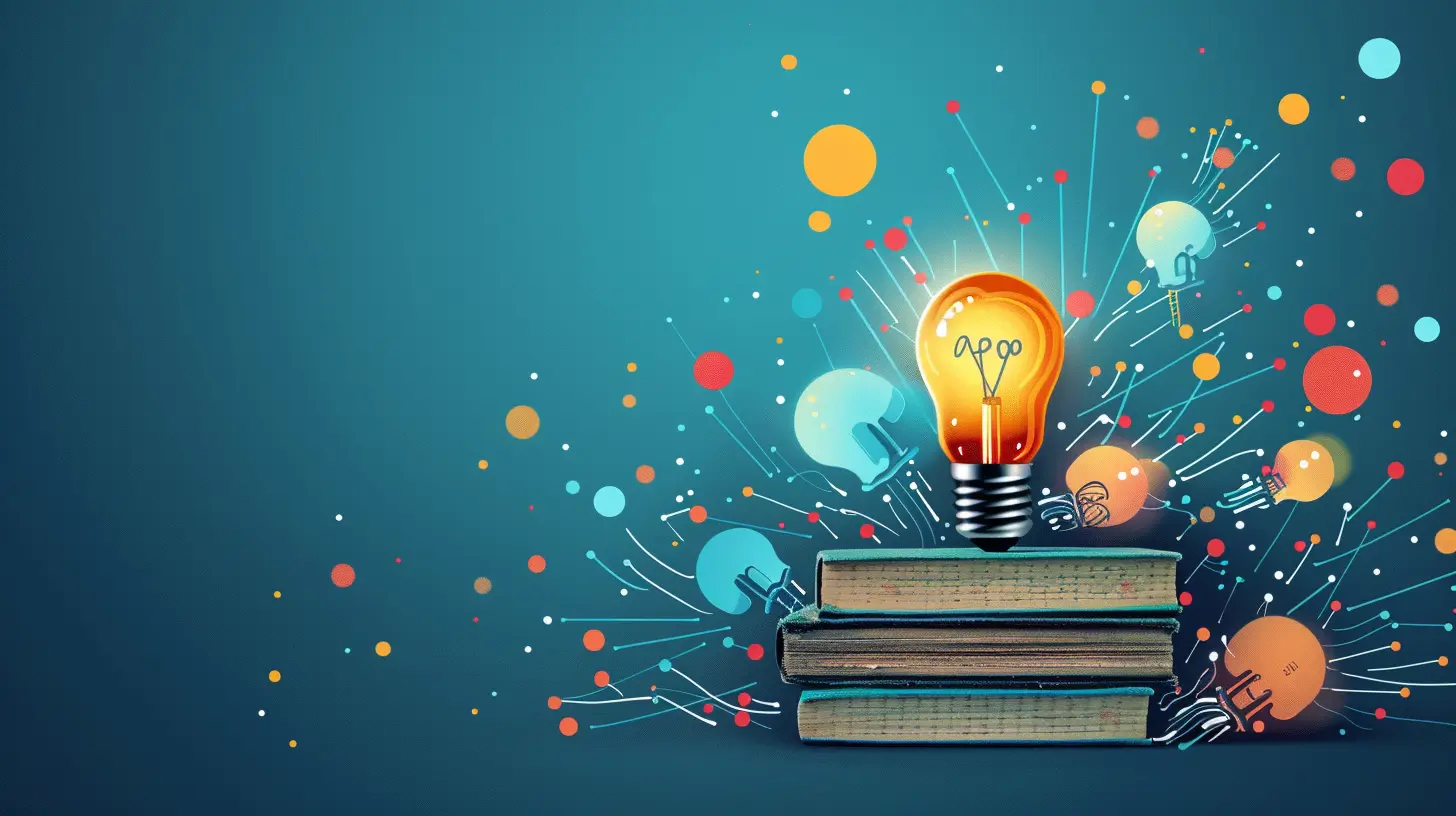How Peer Tutoring Complements Teacher-Led Instruction
9 July 2025
Ever notice how sometimes a classmate can explain something way better than the teacher? Maybe it's the simpler words, or maybe it just feels easier coming from someone your own age. That’s the beauty of peer tutoring—it’s like having a study buddy who actually gets you.
In this post, we’re diving deep into how peer tutoring fits perfectly alongside teacher-led instruction. They’re not opposing forces; they’re like peanut butter and jelly. Let’s unpack how this combo helps students grasp concepts faster, feel more confident, and stay more engaged.
What Is Peer Tutoring Anyway?
Before we dive in, let’s clarify what peer tutoring means. Picture this: a student who's mastered a specific skill or topic lends a hand to another student who’s struggling with it. No grades, no formal lectures—just one student helping another to "get it."It’s not about replacing the teacher. It’s about reinforcing what’s already being taught by creating a space for collaboration, questions, and clarity.
The Magic of Teacher-Led Instruction
Let’s give credit where credit is due. Teachers are the backbone of education. Their instruction is structured, based on curriculum standards, and designed to hit every learning target. They bring experience, subject knowledge, and classroom management skills to the table.Think of teacher-led instruction as the main course in a fancy meal. It provides the nutrients, the core content, and the essential foundation. Without this, peer tutoring would have no framework to build on.
So, How Do Peer Tutoring and Teacher-Led Instruction Work Together?
Here’s where things get exciting. When peer tutoring is paired with teacher instruction, it enhances and extends learning in super effective ways.1. Reinforcement Through Repetition
Let’s be honest—sometimes, we just need to hear something a few times before it really sticks. Teachers do a great job explaining concepts once (or twice), but when you add a peer tutor into the mix, you get that extra repetition in a more relaxed setting.Peer tutors help reinforce the lesson by repeating and breaking down information in simpler language. It’s like having a second decoder ring for the brain.
2. Filling the Gaps
Ever feel like the moment you leave class, you already forgot half of what you learned? You’re not alone. Peer tutors help fill in the gaps left between lessons. They can review material, go over missed points, or just explain things differently until it clicks.Do you know those "Aha!" moments? Peer tutoring helps create more of them.
3. Encouraging Peer-to-Peer Learning
There’s something comforting about talking to someone who’s “been there.” Peer tutors know what you're going through because they were in your shoes not long ago. This builds trust and makes asking questions easier.Sometimes, it's less intimidating to say, “I don't get it” to a fellow student than to raise your hand in front of the whole class.
4. Supporting Diverse Learning Styles
Not everyone learns the same way. Some students are visual learners, others need to hear it, talk about it, or actually do it themselves. Teachers do their best to differentiate instruction, but peer tutors can add another layer of customization.If you need help solving a math problem step-by-step or acting out a history scenario, a peer tutor can meet you where you are with a learning style that suits you.
5. Freeing Up Teacher Time
Let’s be real—teachers are superheroes, but even superheroes need sidekicks. Peer tutoring gives teachers an extra hand to support more students in less time.While one group works with a peer tutor, the teacher can provide focused attention to others who need more help. It’s a win-win for everyone.
Why It Works: The Science Behind Peer Tutoring
We’re not just making this stuff up—it’s backed by research. Studies show that peer tutoring can dramatically improve academic performance, especially in reading and math. Why?Active Engagement
Peer tutoring encourages active learning, where students aren’t just listening, but doing, explaining, and retrying. This boosts understanding and memory retention.Immediate Feedback
When you’re working with a peer, you get instant responses. No waiting for the teacher to grade your quiz—you’ll know right away if you’re on the right track.Positive Relationships
Learning in a peer-supported environment builds confidence. It reduces classroom anxiety and creates a sense of community that encourages growth.Benefits for the Tutor and the Tutee
Peer tutoring isn’t just good for the learner—it’s fantastic for the tutor too. Here’s how:For the Tutee (The Learner):
- Get personalized attention- Ask questions freely
- Learn at their own pace
- Understand topics in a simpler way
For the Tutor (The Helper):
- Solidify their own knowledge- Develop leadership skills
- Build empathy and patience
- Gain confidence in their abilities
In fact, some of the best ways to truly understand something is to teach it to someone else. That’s some next-level brain training!
Real-Life Classroom Scenarios
Let’s paint a picture. Imagine a 6th-grade classroom where the teacher just wrapped up a lesson on fractions. Some students are ready to fly ahead, but others are scratching their heads.Instead of moving on or leaving them behind, the teacher pairs strong students with those who need help. These mini-groups work together while the teacher rotates to assist. One student explains how ¾ and 6/8 are actually the same—you can almost see the lightbulb turning on.
That’s peer tutoring in action, and the class runs like a well-oiled machine.
Types of Peer Tutoring
Let’s break it down further—with different flavors of peer tutoring.1. Classwide Peer Tutoring
Everyone gets paired up, and the roles of tutor and tutee switch back and forth. Great for building a team-based learning culture.2. Cross-Age Tutoring
Older students help younger ones—like 8th graders helping 5th graders. It’s a mentoring relationship that benefits both sides.3. Reciprocal Peer Tutoring
Partners take turns teaching each other. This method builds confidence and ensures both understand the material deeply.4. Same-Age Peer Tutoring
Students in the same grade, often with one being a little ahead in a specific area, help each other. There’s a lot of cooperation and shared context here.Tips for Successful Peer Tutoring Programs
Let’s say you’re a teacher (or even a student leader) wanting to launch a peer tutoring program. Here are some handy tips for success!Start Small
Try it out with a few students or one subject area. You don’t need to roll it out school-wide on day one.Train the Tutors
Give tutors guidance on how to explain concepts, ask questions, and stay patient. Even a short workshop can go a long way.Match Students Thoughtfully
Pair students with compatible personalities and learning styles. If the chemistry’s right, the learning will follow.Create a Safe Space
Foster a non-judgmental atmosphere where mistakes are okay. This is where real learning happens.Collect Feedback
Check in with both tutors and learners. Is it working? What could improve? Keep tweaking the program for the best results.Challenges to Watch Out For
Of course, no program is perfect. Peer tutoring does have potential hiccups.- If the tutor isn’t confident, they may give incomplete or incorrect explanations.
- Students may get distracted if they see the session as “free time.”
- Some learners might feel uncomfortable being tutored by a peer.
But with clear structure, proper training, and supportive guidance, these bumps can be managed. And honestly? The rewards far outweigh the risks.
Final Thoughts: It’s a Team Effort
At the end of the day, education isn’t a solo sport. It’s a team activity. Teachers bring the game plan and drive the play, and peer tutors help carry it over the finish line.When students work together, they don’t just share answers. They share perspectives, build community, boost motivation, and spark confidence in one another.
So next time you're stuck on a tricky math problem or a confusing grammar rule, don’t be shy—turn to a peer. Together, you'll go further than you ever could alone.
all images in this post were generated using AI tools
Category:
Peer TutoringAuthor:

Zoe McKay
Discussion
rate this article
1 comments
Tiffany Cox
In the dance of learning, peers unite, Illuminating paths where teachers ignite. A symphony of voices, each note a guide, Together they flourish, with knowledge as tide. In this harmony, understanding takes flight, Peer tutoring and teaching, a bond shining bright. Together, they craft minds, hearts open wide.
July 26, 2025 at 12:08 PM

Zoe McKay
Thank you for beautifully capturing the essence of peer tutoring! It truly enhances the learning experience and fosters collaboration among students.


